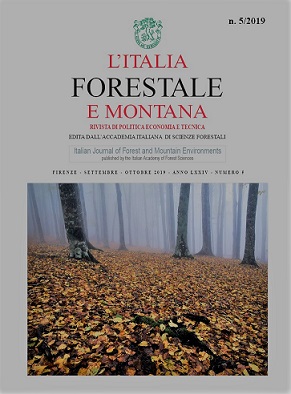Published
2019-11-06
Keywords
- protective forests,
- land sparing,
- land sharing,
- systemic silviculture
Abstract
The Italian forest area has been increasing for several decades, but it is largely under conditions of abandonment due to the suspension of any form of active management. The article highlighted the positive aspects and the critical issues inherent in this situation. On a landscape scale, abandonment is seen as a positive factor that can determine the improvement of biodiversity over time but, since it mainly affects the forests of mountain areas, there is a real risk of compromising important protective functions that contribute to guaranteeing the quality of life of local communities, especially in the face of climate change. Logging operations always have a significant impact on stands but only through silviculture, if implemented with a systemic approach, it is possible to give the forest structure and composition that make it adequate to carry out protective functions. Forestry must therefore be relaunched as a tool to guarantee biological functionality, perpetuity and the use of the forest, increasing resistance, resilience and adaptability of the ecosystems in the face of global change


